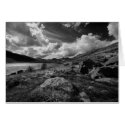
Some colours dominate more than others for the human mind but it depends on what their surrounding colours are. You can use colours that ether clash or complement each other for different effects within your image, if you look at a colour wheel the colours that are next to each other complement and the colours opposite will clash. Now this does not mean that you should not have them colours in the same image, just that you should be aware of what effect they will have on the mood of the image.

Where the colour appears in your image will effect the composition of the image and also the balance of different colours and how many. Sometimes a colour can compete with the main element of an image lessening the overall effect and sometimes the colours them self’s can be the main element of an image.

Changing the settings on your camera can make a place look totally different than what your eyes see, like using daylight setting indoors under tungsten lighting will give you a warm feel or a yellow / orange cast to the image. the thing is to play with colour till you get the image that you had in your minds eye in the camera, and do not forget to have fun.






